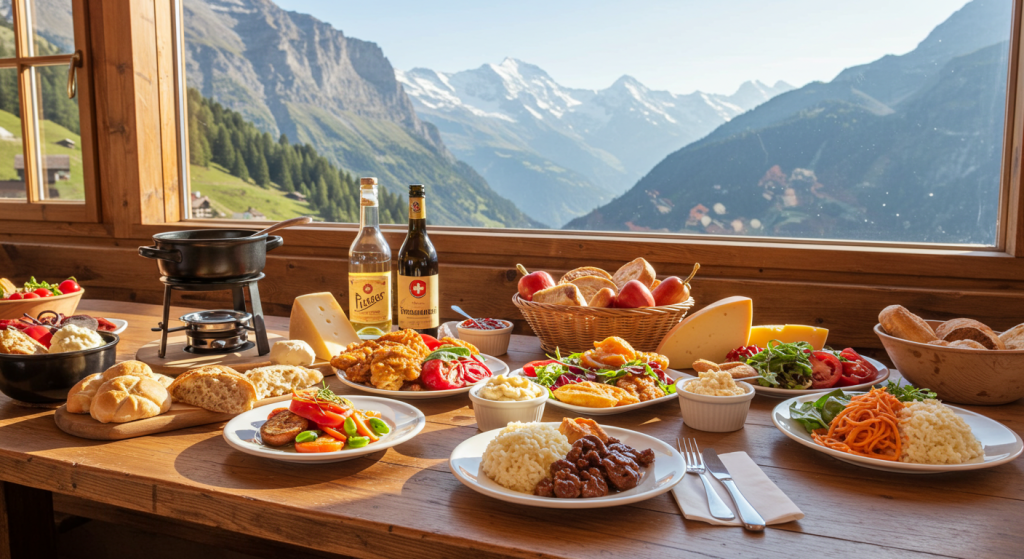
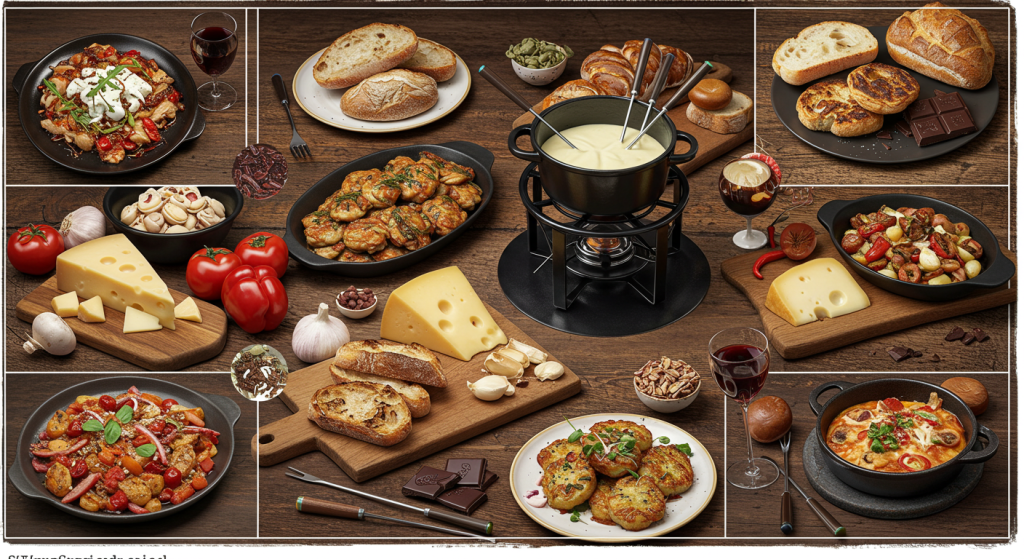
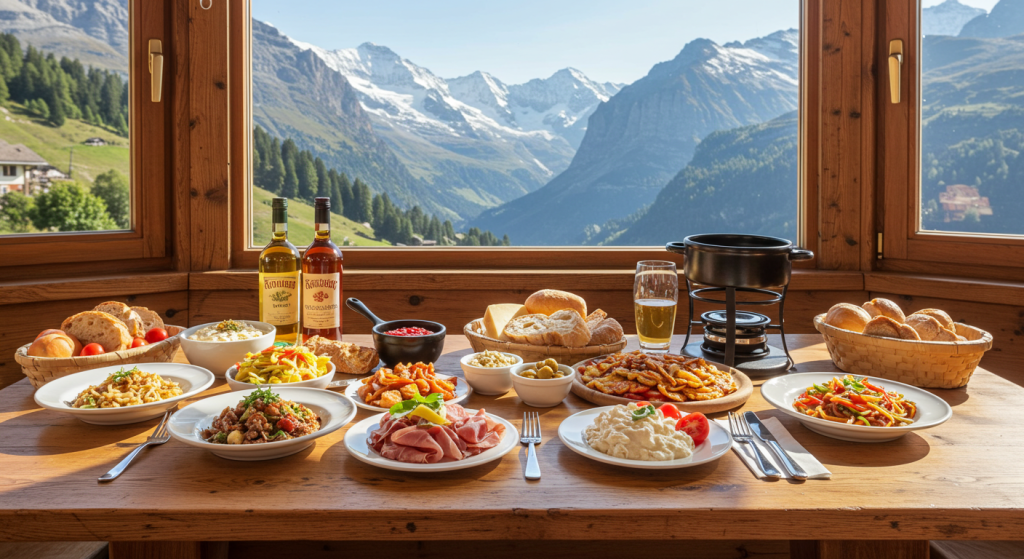
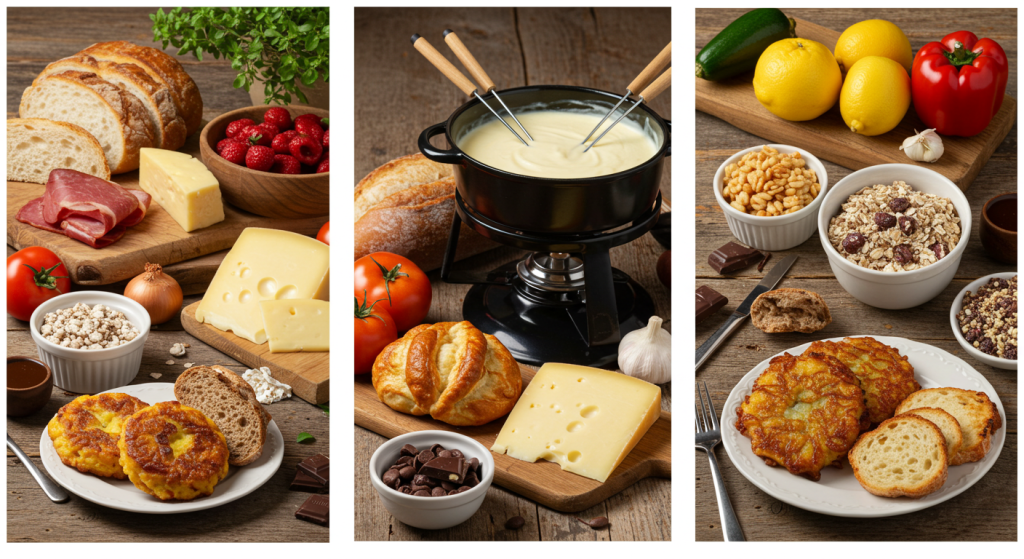
Switzerland, a land renowned for its picturesque landscapes and rich cultural tapestry, is equally celebrated for its diverse and delightful cuisine. The culinary scene in Switzerland reflects the country’s mix of influences from neighboring countries such as France, Italy, and Germany. Whether you’re a seasoned food enthusiast or a curious traveler, Switzerland’s food promises a memorable adventure.
Traditional Swiss Dishes
One cannot discuss Swiss cuisine without mentioning fondue. Originating from the mountains, this dish consists of melted cheese mixed with white wine and served in a communal pot. Diners dip pieces of crusty bread into the bubbling cheese using long forks, creating an experience that is both social and satisfying. Cheese lovers must also try raclette, another iconic dish where semi-hard cheese is melted and scraped onto boiled potatoes, pickles, and cured meats.
For meat lovers, rösti is a must-try. This crispy, golden-brown potato dish resembles hash browns and can be enjoyed as a side or main course. Often adorned with toppings like cheese, bacon, or eggs, rösti is a versatile comfort food that highlights Switzerland’s agricultural bounty.
Sweet Treats and Desserts
Switzerland is famous for its chocolate, being home to some of the world’s best chocolatiers. Swiss chocolate, characterized by its rich flavor and smooth texture, can be found in various forms including bars, pralines, and hot chocolate. Visiting a local chocolatier is a highlight for many, as you can taste the difference made by high-quality cocoa beans and traditional techniques.
Another delightful treat is Nusstorte, a nut-filled tart that originates from the Engadin region. This dessert is typically made with a rich pastry crust filled with caramelized nuts, often walnuts, and is a perfect way to end a Swiss meal.
Local Ingredients and Seasonal Fare
Part of what makes Swiss cuisine so appealing is its emphasis on fresh, local ingredients. From lush pastures to alpine farms, Switzerland boasts a variety of produce. Seasonal markets are popular, offering a bounty of fruits, vegetables, and artisanal goods that reflect the regions’ offerings. In the summer months, fresh berries, while autumn ushers in hearty root vegetables and mushrooms.
In winter, the focus shifts to root vegetables and root-based dishes that provide warmth and sustenance during the cold months. Embracing the Swiss ethos of “using what is available,” many chefs create menus that are deeply tied to the land and its seasonal cycles.
Regional Variations
Switzerland’s food landscape is also marked by its regional diversity. In the French-speaking region of Vaud, you might enjoy a dish called papet vaudois, a savory mix of leeks and potatoes paired with sausage. Meanwhile, in Ticino, the Italian-speaking part, polenta is a staple, served with various sauces or meats. Each region offers a distinct taste of Swiss identity through its unique culinary practices.
Conclusion
Whether you’re indulging in a cheese-filled fondue, tasting handmade chocolate, or enjoying a freshly baked Nusstorte, Swiss cuisine offers an exploration of flavors deeply rooted in tradition and local culture. Traveling through Switzerland allows visitors to taste not only the food but also the stories and history behind each dish. For any food enthusiast, Switzerland is not just a destination; it is a flavorful journey waiting to be explored.
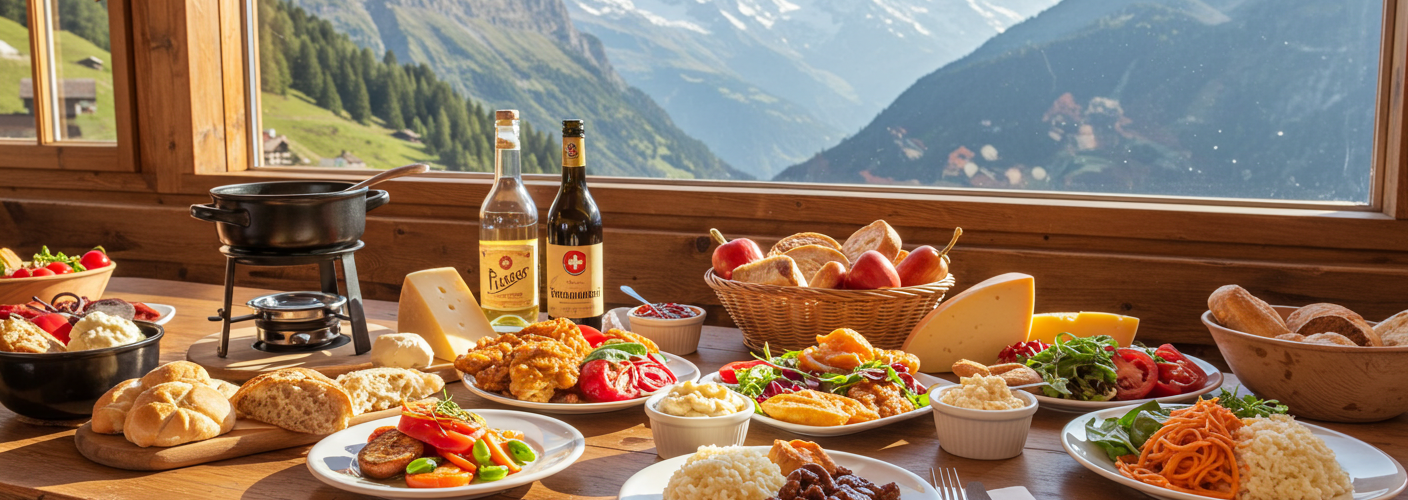



Add comment